The Relation Between Integration and Differentiation
5.1 The derivative of an indefinite integral. The first fundamental theorem of calculus
We corne now to the remarkable connection that exists between integration and differentiation. The relationship between these two processes is somewhat analogous to that which holds between “squaring” and “taking the square root.” If we square a positive number and then take the positive square root of the result, we get the original number back again. Similarly, if we operate on a continuous function f by integration, we get a new function (an indefinite integral off) which, when differentiated, leads back to the original function f. For example, if&) = x2, then an indefinite integral A off may be defined by the equation

where c is a constant. Differentiating, we find A'(x) = x
2 = f(x). This example illustrates a general result, called the first fundamental theorem of calculus, which may be stated as follows:
THEOREM 5.1. FIRST FUNDAMENTAL THEOREM OF CALCULUS. Let f be a function that is integrable on [a, x] for each x in [a, b]. Let c be such that a ≤ c ≤ b and define a new function A as follows:

Then the derivative A’(x) exists at eachpoint x in the open interval (a, b) where f is continuous, andfor such x we have
(5.1) A'(x) = f(x).
First we give a geometric argument which suggests why the theorem ought to be true; then we give an analytic proof.
Geometric motivation. Figure 5.1 shows the graph of a function f over an interval [a, b]. In the figure, h is positive and

The example shown is continuous throughout the interval [x, x + h]. Therefore, by the mean-value theorem for integrals, we have A(x + h) - A(x) = hf(Z), where x ≤ z ≤ x + h.
Hence we have
(5.2) [A(x + h) - A(x)]/h = f(z),

and, since x ≤ z ≤ x + h, we find that f(z) → f(x) as h → 0 through positive values. A similar argument is valid if h → 0 through negative values. Therefore, A’(x) exists and is equal to f (x).
This argument assumes that the funlction f is continuous in some neighborhood of the point x. However, the hypothesis of the theorem refers only to continuity off at a single point x. Therefore, we use a different method to prove the theorem under this weaker hypothesis.
Analytic Proof. Let x be a point of continuity off, keep x fixed, and form the quotient [A(x + h) - A(x)]/h ,To prove the theorem we must show that this quotient approaches the limit f(x) as h → 0. The numerator is

If we write f(t) =f(x) + [f(t) -f(x)] in the last integral, we obtain
from which we find
(5.3)

Therefore, to complete the proof of (5.1), all we need to do is show that

It is this part of the proof that makes use of the continuity off at x.
Let us denote the second term on the right of (5.3) by G(h). We are to prove that G(h) -f 0 as h --f 0. Using the definition of limit, we must show that for every ε > 0 there is a δ > 0 such that
(5.4) |G(h)| < ε whenever 0 < |h| < δ.
Continuity of f at x tells us that, if ε is given, there is a positive δ such that
(5.5) |f(t) -f(x)| < ε/2
whenever(5.6) x - δ < t < x + δ.
If we choose h so that 0 < h < δ, then every t in the interval [x, x + h] satisfies (5.6) and hence (5.5) holds for every such t. Using the property

with g(t) =f(t) -f(x), we see that the inequality in (5.5) leads to the relation

If we divide by h, we see that (5.4) holds for 0 < h < δ. If h < 0, a similar argument proves that (5.4) holds whenever 0 < Ihl < 6, and this completes the proof.
5.2 The zero-derivative theorem
If a functionfis constant on an open interval (a, b), its derivative is zero everywhere on (a, b). We proved this fact earlier as an immediate consequence of the definition of derivative. We also proved, as part (c) of Theorem 4.7, the converse of this statement which we restate here as a separate theorem.
THEOREM 5.2. ZERO-DERIVATIVE THEOREM. If f’(x) = 0 for each x in an open interval I, then f is constant on I.
This theorem, when used in combination with the first fundamental theorem of calculus, leads to the second fundamental theorem which is described in the next section.
5.3 Primitive functions and the second fundamental theorem of calculus
DEFINITION OF PRIMITIVE FUNCTION. A function P is called a primitive (or an antiderivative) of a function f on an open interval I if the derivative of P is f, that is, if P’(x) = f (x) for all x in I.
For example, the sine function is a primitive of the cosine on every interval because the derivative of the sine is the cosine. We speak of a primitive, rather than the primitive, because if P is a primitive offthen so is P + k for every constant k. Conversely, any two primitives P and Q of the same function f cari differ only by a constant because their difference P - Q has the derivative
P’(x) - Q’(x) = f(x) - f(x) = 0
for every x in I and hence, by Theorem 5.2, P - Q is constant on Z.
The first fundamental theorem of calculus tells us that we cari always construct a primitive of a continuous function by integration. When we combine this with the fact that two primitives of the same function can differ only by a constant, we obtain the second fundamental theorem of calculus.
THEOREM 5.3. SECOND FUNDAMENTAL THEOREM OF CALCULUS. Assume f is continuous on an open interval I, and let P be any primitive off on I. Then, for each c and each x in I, we have
(5.7)
 Proof.
Proof. Let

Since f is continuous at each x in I, the first fundamental theorem tells us that A’(x) = f(x) for all x in Z. In other words, A is a primitive off on Z. Since two primitives off can differ only by a constant, we must have A(x) - P(x) = k for some constant k. When x = c, this formula implies -P(c) = k, since A(c) = 0. Therefore, A(x) - P(x) = -P(c), from which we obtain (5.7).
Theorem 5.3 tells us how to find every primitive P of a continuous function f. We simply integrate f from a fixed point c to an arbitrary point x and add the constant P(c) to get P(x). But the real power of the theorem becomes apparent when we write Equation (5.7) in the following form:
(5.8)

In this form it tells us that we cari compute the value of an integral by a mere subtraction if we know a primitive P. The problem of evaluating an integral is transferred to another problem-that of finding a primitive P off. In actual practice, the second problem is a great deal casier to deal with than the first. Every differentiation formula, when read in reverse, gives us an example of a primitive of some functionfand this, in turn, leads to an integration formula for this function.
From the differentiation formulas worked out thus far we cari derive the following integration formulas as consequences of the second fundamental theorem.
EXAMPLE 1. Integration of rationalpowers. The integration formula
(5.9)

(n = 0, 1, 2, . . .)
was proved in Section 1.23 directly from the definition of the integral. The result may be rederived and generalized to rational exponents by using the second fundamental theorem. First of all, we observe that the function P defined by the equation
(5.10) P(x) = (x
n + 2)/(n + 1)
has the derivative P’(x) = x
n if n is any nonnegative integer. Since this is valid for all real x, we may use (5.8) to write

for all intervals [a, b]. This formula, proved for all integers n ≥ 0, also holds for all negative integers except n = - 1, which is excluded because n + 1 appears in the denominator. To prove (5.9) for negative n, it suffices to show that (5.10) implies P’(x) = xn when n is negative and ≠ - 1, a fact which is easily verified by differentiating P as a rational function. Of course, when n is negative, neither P(x) nor P’(x) is defined for x = 0, and when we use (5.9) for negative n, it is important to exclude those intervals [a, b] that contain the point x = 0.
The results of Example 3 in Section 4.5 enable us to extend (5.9) to all rational exponents (except -l), provided the integrand is defined everywhere on the interval [a, b] under consideration. For example, if 0 < a < b and n = -1/2, we find

This result was proved earlier, using the area axioms. The present proof makes no use of these axioms.
In the next chapter we shall define a general power function f such that f(x) = x
c for every real exponent c. We shall find that this function has the derivative f’(x) = cx
c - 1 and the primitive P(x) = x
c + 1/(C + 1) if c ≠ - 1. This Will enable us to extend (5.9) to all real exponents except - 1.
Note that we cannot get P’(x) = 1/x by differentiation of any function of the form P(x) = x
n. Nevertheless, there exists a function P whose derivative is P’(x) = 1/x. To exhibit such a function all we need to do is write a suitable indefinite integral; for example,

This integral exists because the integrand is monotonie. The function SO defined is called the Zogarithm (more specifically, the naturaf logarithm). Its properties are developed systematically in Chapter 6.
EXAMPLE 2. Integration of the sine and cosine. Since the derivative of the sine is the cosine and the derivative of the cosine is minus the sine, the second fundamental theorem also gives us the following formulas:
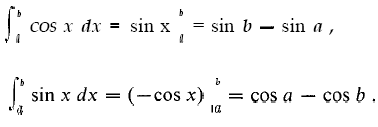
These formulas were also proved in Chapter 2 directly from the definition of the integral. Further examples of integration formulas cari be obtained from Examples 1 and 2 by taking finite sums of terms of the form Ax’“, B sin x, C COS x, where A, B, C are constants.
5.4 Properties of a function deduced. from properties of its derivative
If a function f has a continuous derivative f' on an open interval Z, the second fundamental theorem states that
(5.11)

for every choice of points x and c in Z. This formula, which expresses f in terms of its derivative f ‘, enables us to deduce prolperties of a function from properties of its derivative. Although the following properties have already been discussed in Chapter 4, it may be of interest to see how they cari also be deduced as simple consequences of Equation (5.11).
Suppose f' is continuous and nonnegative on I. If x > c, then

≥ 0, and hence f(x) ≥ f(c). In other words, if the Iderivative is continuous and nonnegative on Z, the function is increasing on Z.
In Theorem 2.9 we proved that the indefinite integral of an increasing function is convex. Therefore, if f’ is continuous and increasing on 1, Equation (5.11) shows thatf is convex on Z. Similarly, f is concave on those intervals where f’ is continuous and decreasing.
5.5 Exercises
In each of Exercises 1 through 10, find a primitive of f; that is, find a function P such that P’(x) = f(x) and use the second fundamental theorem to evaluate

1. f(x) = 5x
3. 6. f(x) = √
2x + √
x/2, x > 0.
2. f(x) = 4x
4 - 12x. 7. f(x) = [2x
2 - 6x + 7]/2√
2x, x > 0.
3. f(x) = (x + 1)(x
3 - 2). 8. f(x) = 2x
1/3 - x
-1/3, x > 0.
4. f(x) =[x
4 +x - 3]/x
3 , x ≠ 0. 9. f(x) = 3sinx + 2x
5.
5. f(x) = (1 + √
x)
2, x > 0. 10. f(x) = x
4/3 - 5cosx.
11. Prove that there is no polynomial f whose derivative is given by the formula f’(x) = 1/x.
12. Show that

for all real x.
13. Show that

for all real x .
14. A function f is continuous everywhere and satisfies the equation

for all x. Compute f(π/4) and f’(π/4).
15. Find a function f and a value of the constant c such that

for all real x .
16. Find a function f and a value of the constant c such that

for all real x .
17. There is a function J defined and continuous for all real x, which satisfies an equation of the form

where c is a constant. Find an explicit formula for f (x) and find the value of the constant c.
18. A function f is defined for all real x by the formula

Without attempting to evaluate this integral, find a quadratic polynomialp(x) = a + bx + cx
2 such that p(0) = f(0), p'(0) =f'(0), and p''(0) =f''(0).
19. Given a function g, continuous everywhere, such that g( 1) = 5 and

. Let f(x) =

. Prove that

then compute f''( 1) and f'''( 1).
20. Without attempting to evaluate the following indefinite integrals, find the derivative f'(x) when f(x) is equal to

.
21. Without attempting to evaluate the integral, compute f'(x) if f is defined by the formula

22. Compute f(2) if f is continuous and satisfies the given formula for all x ≥ 0.

23. The base of a solid is the ordinate set of a nonnegative functionf’over the interval [0, a]. All cross sections perpendicular to this interval are squares. The volume of the solid is
a
3 - 2acosa + (2 - a
2)sina
for every a ≥ 0. Assume f is continuous on [0, a] and calculate f(a).
24. A mechanism propels a particle along a straight line. It is designed so that the displacement of the particle at time t from an initial point 0 on the line is given by the formula f(t) = t
2/2 + 2tsint. The mechanism works perfectly until time t = π when an unexpected malfunction occurs. From then on the particle moves with constant velocity (the velocity it acquires at time t = π). Compute the following: (a) its velocity at time t = π; (b) its acceleration at time t = π/2 ; (c) its acceleration at time t = 3π/2; (d) its displacement from 0 at time t = 5π/2.(e) Find a time t > π when the particle returns to the initial point 0, or else prove that it never returns to 0.
25. A particle moves along a straight line. Its position at time t is,f(t). When 0 ≤ t ≤ 1, the position is given by the integral

(Do not attempt to evaluate this integral.) For t ≤ 1, the particle moves with constant acceleration (the acceleration it acquires at time t = 1). Compute the following: (a) its acceleration at time t = 2; (b) its velocity when t = 1; (c) its velocity when t > 1; (d) the difference f(t) -f(l) when t > 1.
26. In each case, find a function f with a continuous second derivative f'' which satisfies all the given conditions or else explain why auch an example cannot exist.
(a) f''(x) > 0 for every x, f'(0) = 1, f'(1) = 0.
(b) f''(x) > 0 for every x, f'(0) = 1, f'( 1) = 3.
(c) f''(x) > 0 for every x, f'(0) = 1, f(x) ≤ 100 for all x > 0.
(d) f''(x) > 0 for every x, f'(0) = 1, f(x) ≤ 100 for all x < 0.
27. A particle moves along a straight line, its position at time t being f(t). It starts with an initial velocity f(0) = 0 and has a continuous acceleration f''(t) ≥ 6 for all t in the interval 0 ≤ t ≤ 1.Prove that the velocity f'(t) ≥ 3 for all t in some interval [a, b], where 0 ≤ a < b ≤ 1, with b - a = + .
 [+ if x > 0, - if x < 0]
[+ if x > 0, - if x < 0]
 [+ if x > 0, - if x < 0]
[+ if x > 0, - if x < 0] u
u

 /u
/u


 /u
/u
 /u
/u

 /u
/u




 /u
/u

 /u
/u

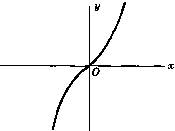

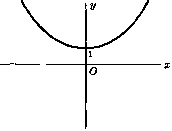

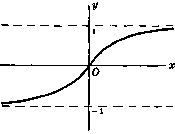

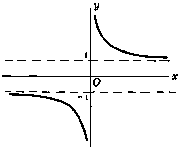

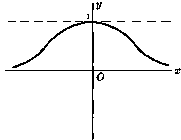

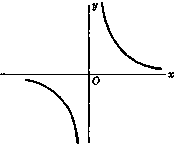

 ) -∞ < x < ∞
) -∞ < x < ∞ ) x ≥ 1 [cosh-1 x > 0 is principal value]
) x ≥ 1 [cosh-1 x > 0 is principal value] ) 0 < x ≤ 1 [sech-1 a; > 0 is principal value]
) 0 < x ≤ 1 [sech-1 a; > 0 is principal value] ) x ≠ 0
) x ≠ 0

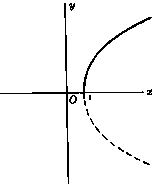

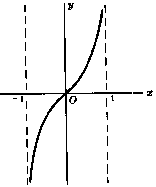

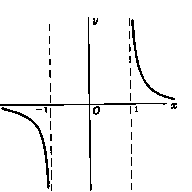

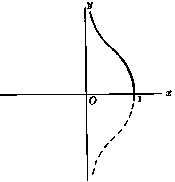

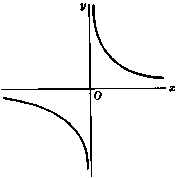








 with g(t) =f(t) -f(x), we see that the inequality in (5.5) leads to the relation
with g(t) =f(t) -f(x), we see that the inequality in (5.5) leads to the relation

 Since f is continuous at each x in I, the first fundamental theorem tells us that A’(x) = f(x) for all x in Z. In other words, A is a primitive off on Z. Since two primitives off can differ only by a constant, we must have A(x) - P(x) = k for some constant k. When x = c, this formula implies -P(c) = k, since A(c) = 0. Therefore, A(x) - P(x) = -P(c), from which we obtain (5.7).
Since f is continuous at each x in I, the first fundamental theorem tells us that A’(x) = f(x) for all x in Z. In other words, A is a primitive off on Z. Since two primitives off can differ only by a constant, we must have A(x) - P(x) = k for some constant k. When x = c, this formula implies -P(c) = k, since A(c) = 0. Therefore, A(x) - P(x) = -P(c), from which we obtain (5.7).
 (n = 0, 1, 2, . . .)
(n = 0, 1, 2, . . .)




 ≥ 0, and hence f(x) ≥ f(c). In other words, if the Iderivative is continuous and nonnegative on Z, the function is increasing on Z.
≥ 0, and hence f(x) ≥ f(c). In other words, if the Iderivative is continuous and nonnegative on Z, the function is increasing on Z.
 for all real x.
for all real x. for all real x .
for all real x .
 for all real x .
for all real x . for all real x .
for all real x .

 . Let f(x) =
. Let f(x) =  . Prove that
. Prove that
 .
.

